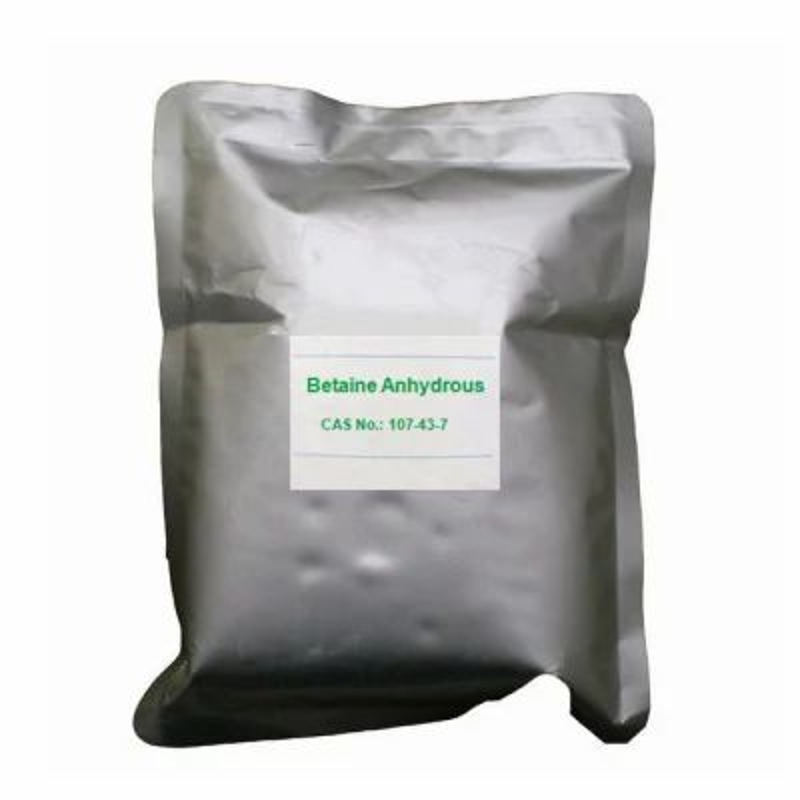-
Categories
-
Pharmaceutical Intermediates
-
Active Pharmaceutical Ingredients
-
Food Additives
- Industrial Coatings
- Agrochemicals
- Dyes and Pigments
- Surfactant
- Flavors and Fragrances
- Chemical Reagents
- Catalyst and Auxiliary
- Natural Products
- Inorganic Chemistry
-
Organic Chemistry
-
Biochemical Engineering
- Analytical Chemistry
-
Cosmetic Ingredient
- Water Treatment Chemical
-
Pharmaceutical Intermediates
Promotion
ECHEMI Mall
Wholesale
Weekly Price
Exhibition
News
-
Trade Service
College of Life Sciences, Nanchang Normal University Liang Lei Shen Chenghui
Nowadays, people are becoming more and more diverse, but do you know where the food you eat comes from? As early as the pre-Qin period, the ancestors cultivated crops such as apricots, peaches, pears, plums, rice, millet, and anthracite
.
With the opening of the Silk Road, grapes, walnuts, pomegranates, watermelons, cantaloupe, etc.
came
from the Western Regions.
After the great geographical discovery of Europe, crops such as corn, potatoes, tomatoes, etc.
from the Americas came to China
across the sea.
The continuous discovery and cultivation of food, as well as global communication and exchange, paint our colorful gastronomic life
today.
pomegranate
Pomegranate is a woody plant of the genus Pomegranate of the pomegranate family, which originated in Central Asia and has a cultivation history of 5,000 years, and was introduced to the Central Plains
after Zhang Qian of the Western Han Dynasty sent to the Western Regions.
Emperor Wudi of Han widely cultivated pomegranates in the capital Chang'an, and in the early days it was mainly for the viewing of the imperial concubines, so it was mainly planted in the imperial garden "Shanglin Yuan" and the hot spring palace in Lishan
.
During the Wei and Jin dynasties, pomegranates "flew" into the homes
of ordinary people.
coconut
Coconut is the only plant in the genus Palm Coconut and is tall
.
By about 2000 BC, coconut palms were found in Indonesia, Malaysia, Singapore and the islands of the Pacific Ocean
.
The cultivation history of coconuts in China has been more than 2,000 years, and written records can be traced back to the Han Dynasty
.
The fruit of the coconut can be drifted in the sea for thousands of kilometers and then take root and breed
very far from the mother tree.
Mangosteen
Mangosteen is a woody plant of the Garcinia family Garcinia family, scientific name Mangji persimmon, which is transliterated from the Malay word "mangis", the first mate of Zheng He's fleet
, Ma Huan.
Because of its distinct knots and longitudinal ridges on its branches, it looked like bamboo, so it was later called mangosteen
.
Mangosteen is native to the Maluku Islands in Malaysia, and was introduced to Taiwan in 1919 and later introduced to Hainan and other places
.
Lotus fog
Lotus fog is a woody plant in the genus Peachaceae in the myrtle family, scientific name Peach
.
Lotus fog is native to the Malay Peninsula, Indonesia and the Andaman and Nicobar Islands, and is widely introduced in tropical regions of the world
.
At present, the most cultivated lotus fog abroad is the Indonesian island
of Java.
From 1624 to 1662, lotus fog was introduced to Taiwan
from Java.
In the early 80s of the 20th century, lotus fog was introduced to Guangxi from Pingtung, Taiwan, and Hainan, Guangdong, Fujian, Sichuan and Yunnan provinces have also begun to cultivate lotus fog
in recent years.
guava
Guava, also known as Bale, is a woody plant
in the genus Guava in the myrtle family.
If guava is left for a long time after picking, the aroma will change malignantly, commonly known as the smell of stinky, so it is also called "chicken poop (ya) fruit"
.
Guava is native to Latin America and was discovered
by Peruvians in the tropical forests of the Americas more than 2,000 years ago.
In the 17th century, guava was introduced to China, and it has been cultivated for
more than 300 years.
passion fruit
Passion fruit, also known as passionflower, egg fruit, and pomegranate, is an herbaceous plant of the passionflower family, native to Brazil and widely planted in tropical and subtropical regions
.
At the beginning of the 20th century, passion fruit was introduced to Taiwan; In the early 50s of the 20th century, overseas Chinese introduced seeds from Southeast Asia to Nan'an, Fujian Province for sporadic planting
.
sweetsop
Soursop, also known as Buddha Head Fruit, Shakya Fruit, and Rinpo Pinna, is a woody plant in the family Soursopaceae that originates in the valleys between Ecuador and Peru in the Andes, and is native to tropical American land and the West Indies
.
The Spaniards brought cherimoya seeds from the New World to the Philippines
in the 16th century.
Later, the Portuguese introduced it to southern
India.
At the beginning of the 17th century, cherimoya was introduced to Guangdong, Guangxi, Fujian, Taiwan and other places in China, with a history
of 400 years.
Chinese wolfberry
Goji berries are a collective name
for commercial goji berries, Ningxia goji berries, Chinese goji berries and other nightshade wolfberries.
Goji berries are wild species all over the world, but as an economic plant resource, wild domestication, large-scale cultivation and comprehensive development and utilization are unique to China and have a long
history.
Written in the Book of Poetry from the 11th century BC to the 6th century BC, there are 7 records of goji berries
.
The artificial domestication stage of goji berries should be earlier than the Tang Dynasty, and the scale is not large, and the cultivation area has only developed
since it was listed as a tribute to the imperial court in the fourteenth year of the Ming Dynasty (1501).
Ginseng fruit
Ginseng fruit, formerly known as melon tomato, is a perennial herbaceous plant in the genus Solanaceae, native to the northern foothills
of the Andes in South America.
In 1970, New Zealand introduced melon tomato as the second important exotic fruit after kiwifruit for commercial production
.
In 1985, China introduced ginseng fruit from New Zealand to Guangzhou South China Botanical Garden
.
Mysterious fruit
Mysterious fruit is a perennial evergreen shrub of the mysterious fruit of the family Mt.
Lamaceae, native to Ghana and Congo in West Africa
.
Studies have found that within 1-2 hours of eating the mysterious fruit, eating anything sour will feel very sweet
.
This is because the pulp of the mysterious fruit contains a protein, the mysterious fruit, which can paralyze people's sense of taste, and the mechanism of action is not clear
.
In 1964, the Apuri Botanical Garden of the Republic of Ghana presented the mysterious fruit to our country
as a national gift.
Durina
Durian is a woody plant of the genus Duria of the kapok family, with a trunk that reaches a height of more than 40 meters, making it the tallest fruit tree
in the tropics.
Durian is native to Southeast Asian countries such as Thailand, Malaysia, and the Philippines, and is also cultivated
in small quantities in Taiwan, Hainan and other places.
sugar cane
Sugarcane is a grass of the family Poaceae, probably originating in India, the South Pacific island of New Guinea, and China
.
At present, there are four varieties of sugarcane cultivation: tropical, Indian, Chinese and fleshy.
In 6000 BC, sugar cane was domesticated as a tropical species (aka noble species)
on the island of New Guinea.
With human migration, it spread to the Asian continent and naturally interbred with local wild species, resulting in Indian and Chinese species
.
Not earlier than the 3rd century BC, sugarcane was introduced into southern China from Southeast Asia or India, and was introduced from Guangdong to the Xiang'e region
at the end of the Warring States period.
soybean
Soybean (yellow, green, black) is an annual herb of the legume family Soybean and is the most important legume
in the world.
Soybeans originated in China, and most of them are believed to originate in the Yunnan-Guizhou Plateau, cultivated everywhere, and widely cultivated all over the world
.
Soybeans are one of the five ancient grains and have been cultivated for
5,000 years.
peanut
Peanuts, formerly known as falling peanuts, are annual herbs of the genus Peanut of the legume family Rosaceae, native to Peru, Brazil and Bolivia in South America
.
At the beginning of the 16th century, peanuts were introduced to China
by sea by the Portuguese.
After the Qing Dynasty, peanuts were widely cultivated and exploited
.
Red bean
Adzuki bean (adzuki bean, adzuki bean) is an annual erect or winding herbaceous plant in the legume family Phaseolus in the subfamily Phaseolus fabinae, mainly found in East Asia
.
Red beans are native to China, ancient names Xiaoshu, red smoke, has a history
of cultivation in China for more than 2,000 years.
From the 3rd to the 8th centuries AD, red beans were introduced to Japan from China through Korea, and formed a secondary center in Japan, and later spread to the Americas and other parts of
the world.
mung bean
Mung bean is an annual herb of the legume genus Phaseolus vulgaris, native to India and Myanmar, and has been cultivated in China for more than 2,000 years
.
pea
Pea is an annual climbing herb in the legume family Pea
.
The centers of origin are generally considered to be Ethiopia, the Mediterranean, western Asia, Transcaucasia, and western
Asia Minor.
Peas were domesticated by Neolithic farmers about 10,000 years ago and are considered one of
the first domesticated crops.
Peas were introduced to China
in the Han Dynasty at the latest.
broad bean
Fava beans are annual or perennial herbaceous plants in the genus Vetch of the legume family, originating in southwestern
Asia.
4,000-5,000 years ago, China has begun to cultivate broad beans
.
edible fungi
Edible fungi are large fungi
for human consumption.
China is the first country to carry out artificial cultivation and consumption of edible fungi, as early as more than 2,000 years ago, "Zhou Li" recorded the cultivation
of fungus.
Most mushrooms such as shiitake mushrooms, fungus, and grass mushrooms originated in China
.
At present, there are more than 100 kinds of cultivated edible and medicinal mushrooms in China, and there are more than 20 kinds of common ones on the market, and the larger output is shiitake mushrooms, black fungus, etc
.
kelp
Kelp is a perennial cold-water macroedible algae of kelp in the brown algae phylum Kelp family, native to the northern coast of Korea, the northern part of the Japanese island of Honshu and the coast of Hokkaido, and the coast
of the Russian Far East.
Around 1927, kelp was introduced to China for farming
.
In the 50s of the 20th century, China's algae scientists realized the artificial cultivation
of kelp.
In the 80s of the 20th century, China surpassed Japan for the first time and became the world's first seafood aquaculture country, and still maintains a leading position
in the world.
nori
Nori is a collective name
for more than 130 species in the family Rubellae, the red algae phylum.
In China, there are two main types of seaweed artificial cultivation, the north is striped seaweed, and the south is the altar seaweed
named after Haitan Island, the main island of Pingtan County, Fujian Province.
In the 50s of the 20th century, China's algae scientists Zeng Chengkui, Zhang Derui and Japanese algae scientist Sohishang Kuroki completed the study of seaweed life history in the laboratory almost at the same time, opening the door to modern seaweed artificial seedling breeding and cultivation, and gradually forming a large-scale seaweed artificial cultivation industry
.
China Food News(Version 06, December 09, 2022)
(Responsible editor: Wang Ning)







